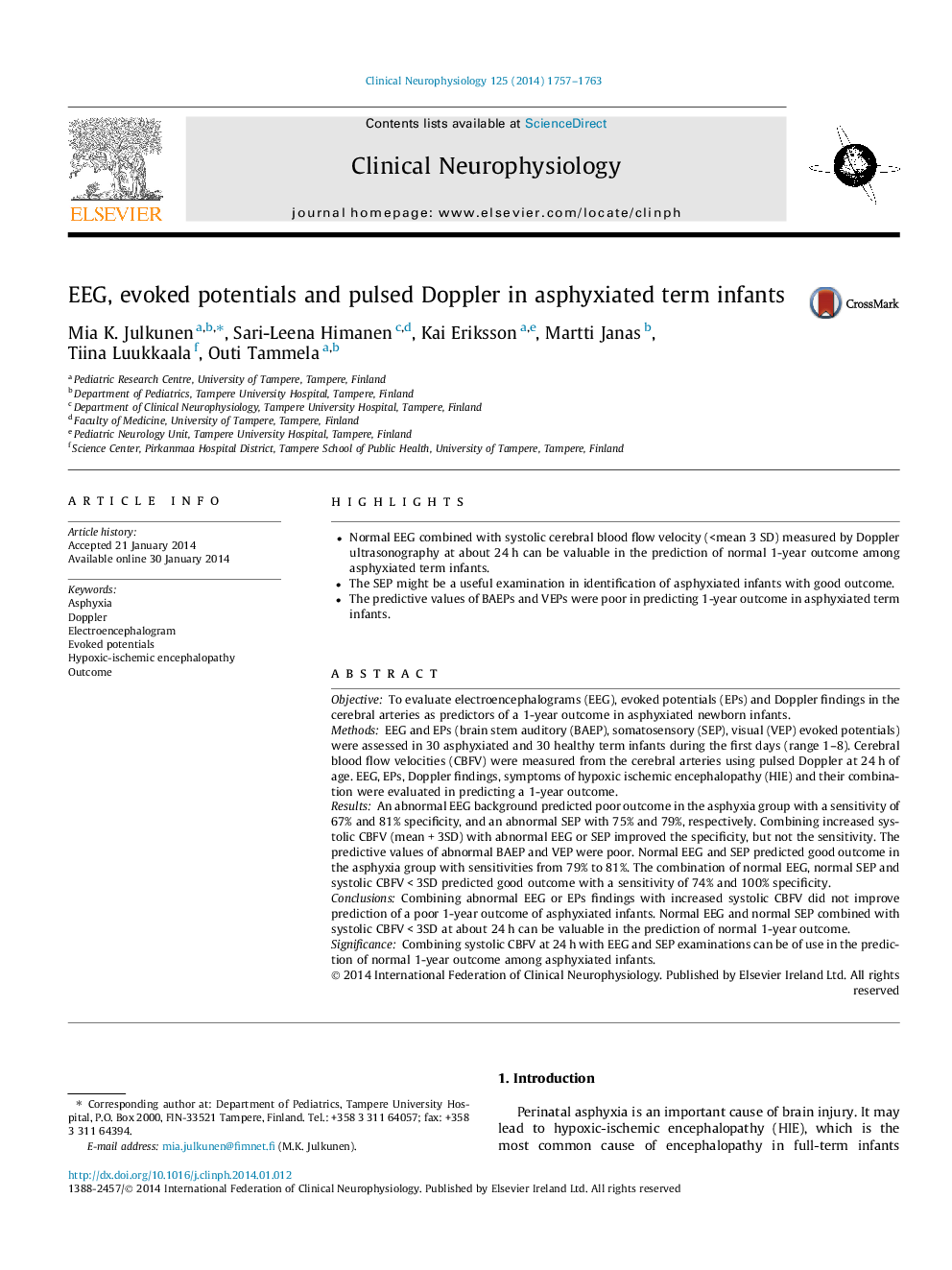| Article ID | Journal | Published Year | Pages | File Type |
|---|---|---|---|---|
| 3043173 | Clinical Neurophysiology | 2014 | 7 Pages |
•Normal EEG combined with systolic cerebral blood flow velocity ( ObjectiveTo evaluate electroencephalograms (EEG), evoked potentials (EPs) and Doppler findings in the cerebral arteries as predictors of a 1-year outcome in asphyxiated newborn infants.MethodsEEG and EPs (brain stem auditory (BAEP), somatosensory (SEP), visual (VEP) evoked potentials) were assessed in 30 asphyxiated and 30 healthy term infants during the first days (range 1–8). Cerebral blood flow velocities (CBFV) were measured from the cerebral arteries using pulsed Doppler at ∼24 h of age. EEG, EPs, Doppler findings, symptoms of hypoxic ischemic encephalopathy (HIE) and their combination were evaluated in predicting a 1-year outcome.ResultsAn abnormal EEG background predicted poor outcome in the asphyxia group with a sensitivity of 67% and 81% specificity, and an abnormal SEP with 75% and 79%, respectively. Combining increased systolic CBFV (mean + 3SD) with abnormal EEG or SEP improved the specificity, but not the sensitivity. The predictive values of abnormal BAEP and VEP were poor. Normal EEG and SEP predicted good outcome in the asphyxia group with sensitivities from 79% to 81%. The combination of normal EEG, normal SEP and systolic CBFV < 3SD predicted good outcome with a sensitivity of 74% and 100% specificity.ConclusionsCombining abnormal EEG or EPs findings with increased systolic CBFV did not improve prediction of a poor 1-year outcome of asphyxiated infants. Normal EEG and normal SEP combined with systolic CBFV < 3SD at about 24 h can be valuable in the prediction of normal 1-year outcome.SignificanceCombining systolic CBFV at 24 h with EEG and SEP examinations can be of use in the prediction of normal 1-year outcome among asphyxiated infants.
